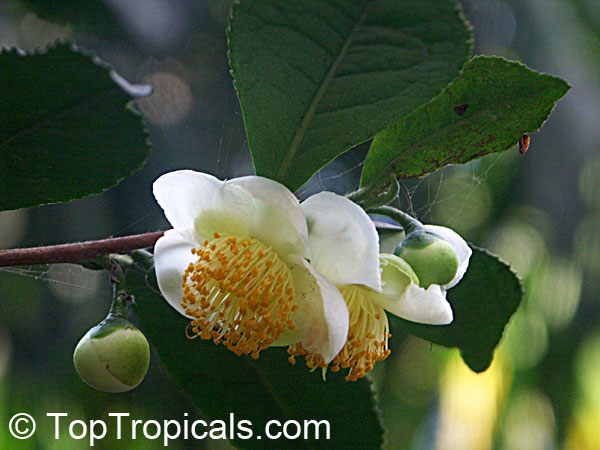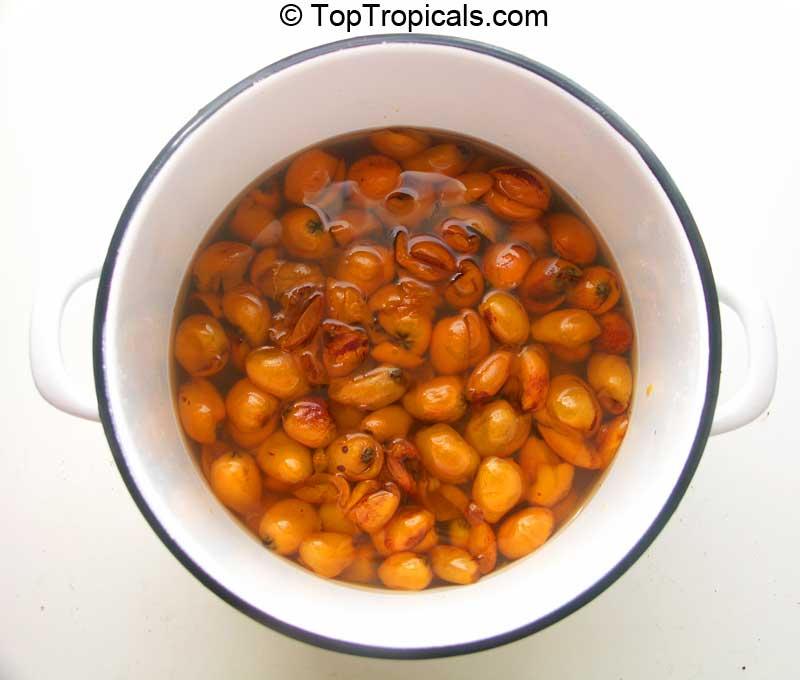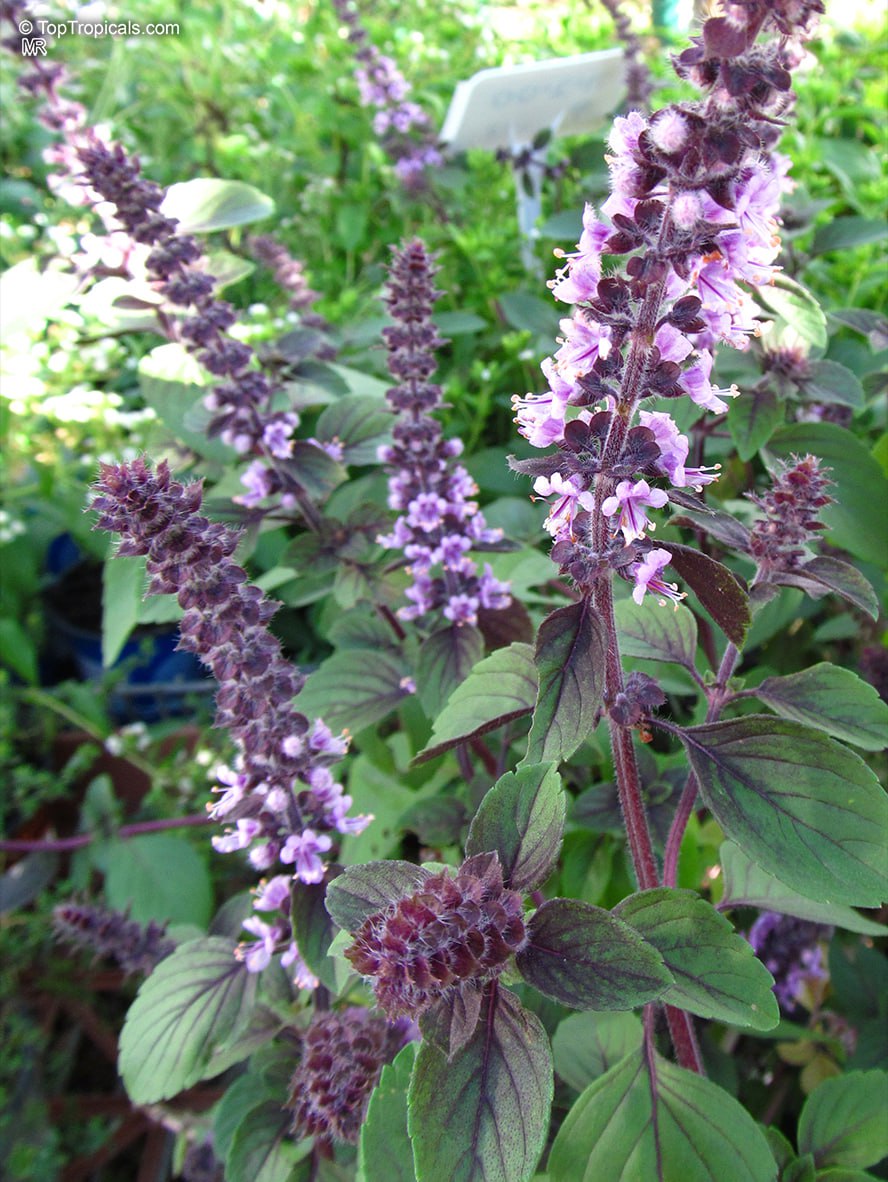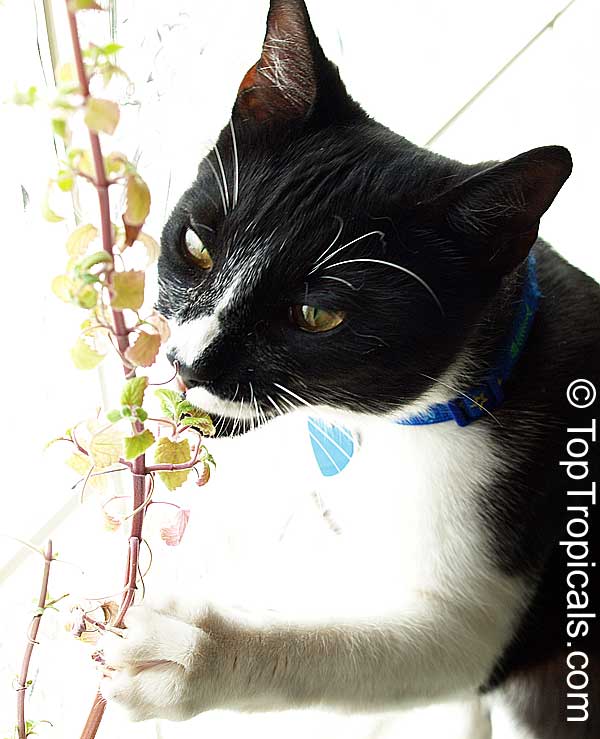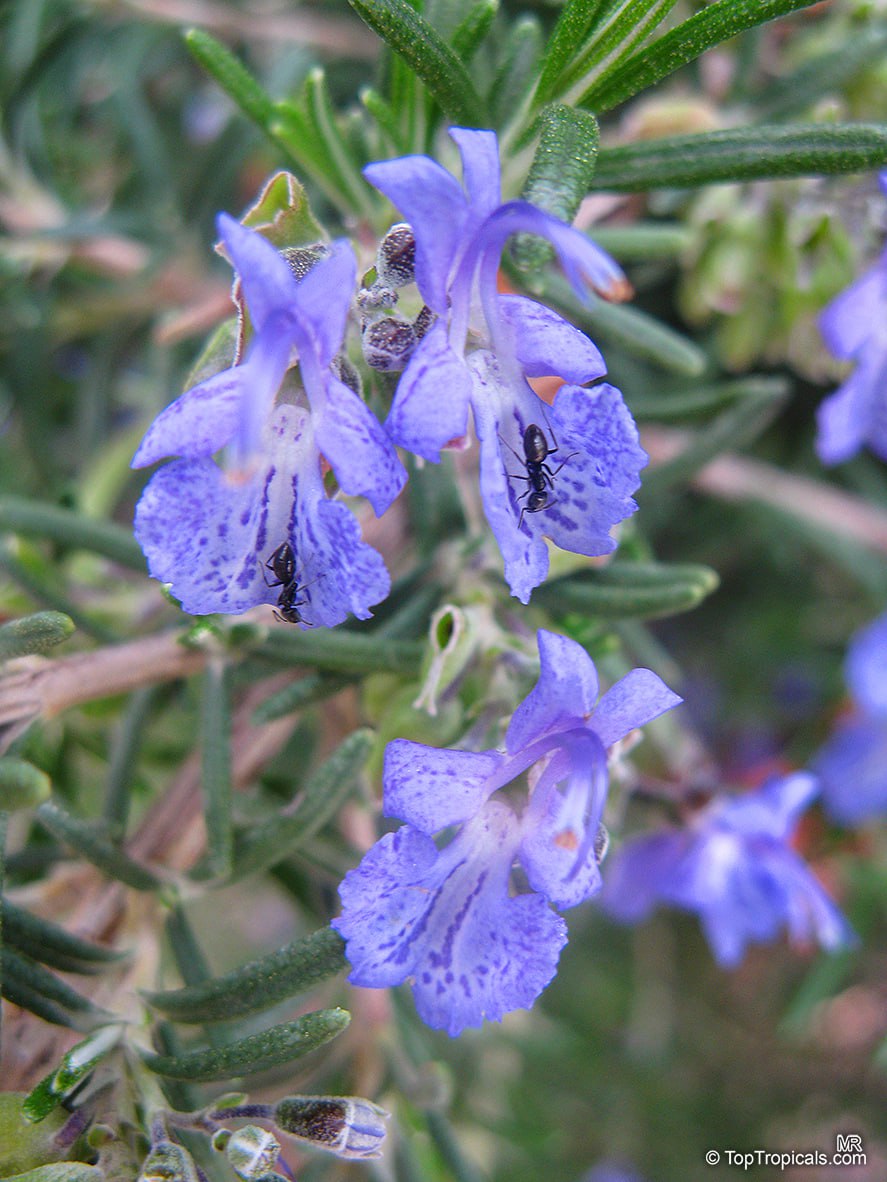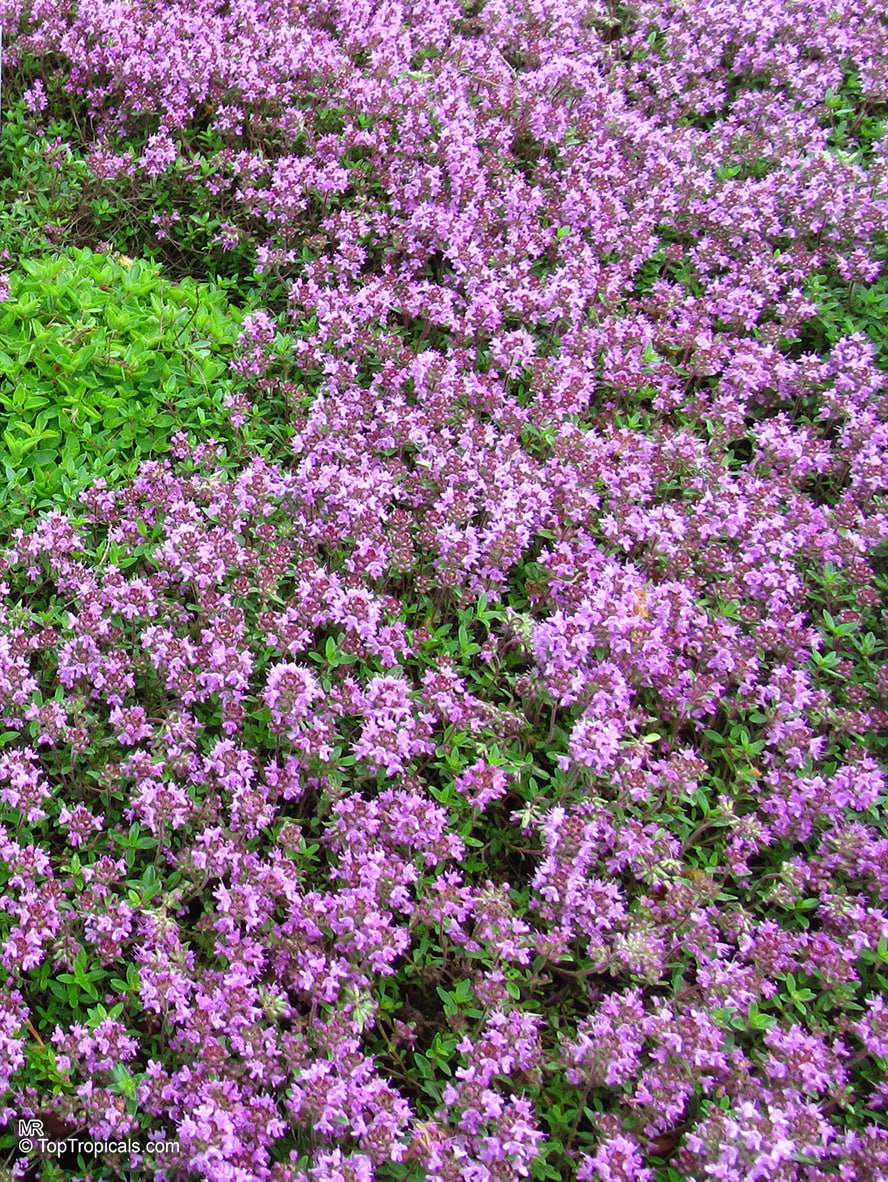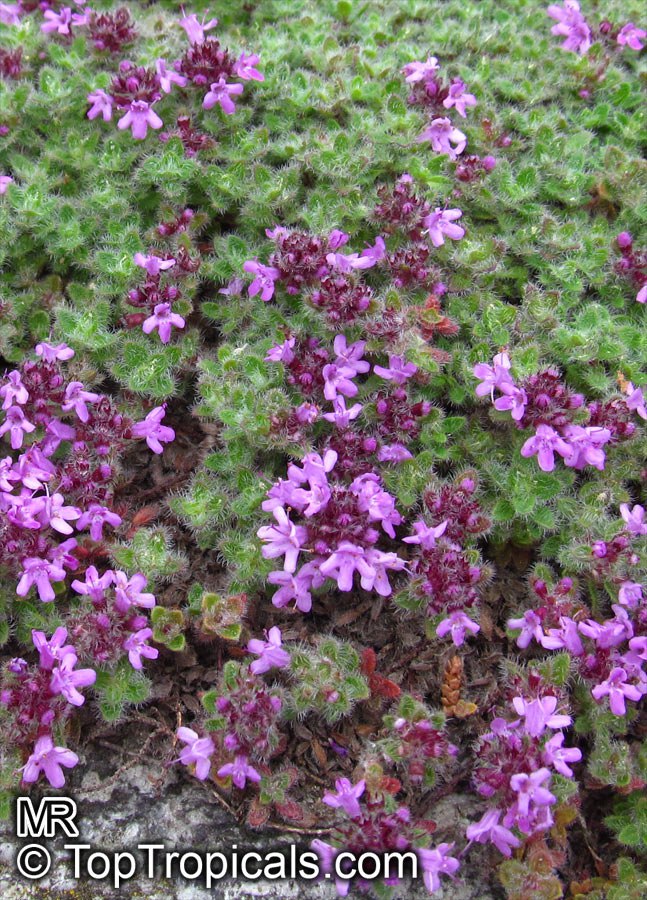Garden Blog - Top Tropicals
Longevity Spinach Superfood Recipes: how to make healthy food delicious
Can healthy food taste delicious?
Healthy Longevity Spinach... It tastes like... spinach? You can add it to your salads, but let's face it, you can only eat so much of a salad. So try it cooked - you will be so surprised and want to eat it every day!
🍳 Eggs with Longevity Spinach
You will need:
🌿 Longevity Spinach or Okinawa Spinach: 2 handfuls
- 1 cup Bacon (optional), sliced or chopped, or: 2 tbsp Olive or vegetable oil
1 large Onion, sliced in semi-rings
1 sweet pepper, red or yellow, sliced
3-5 cloves garlic, chopped (optional, to taste)
5-6 eggs
1 cup ground beef or turkey/chicken (optional), or mushrooms
½ cup shredded cheese (regular or Parmesan)
salt and pepper to taste
🌶 Sweet Chile Sauce (optional. Tastes great with this dish!)
- 🍷 a glass of your favorite wine or cocktail to enjoy your dinner
Preparation time: 10 min
Makes dinner for 2
Open detailed recipe
🛒 Order Longevity Spinach
#Edible_Forest #Recipes
TopTropicals.com
We Grow Happiness
Date:
A Cup of Tea Plant
By Onika Amell, tropical plant specialist
A: I live in Ave Maria, Florida. I want to try my hand at growing my own tea. Which plant do I need?
A: Most people do not realize they are actually enjoying
camellias when they sip their cup of tea. True tea comes from the Camellia sinensis
plant, an evergreen shrub or small tree.
In the fall and winter, the plant will produce small white flowers with
a lovely fragrance. The foliage is shiny and dark green with a very nice
informal and open look.
Camellia sinensis (or tea plant, as it is commonly known) prefers a
temperature between 65 and 86 degrees, which makes Florida an ideal area to grow
them. However, if you live in colder zones, you can certainly succeed
growing your own tea plants using a greenhouse. Alternatively, you can use
containers which can be brought inside when temperatures start falling. Tea plants
will usually survive a very slight freeze, though the leaves may be damaged or
killed. It will not tolerate a hard freeze. They prefer full sun or light
shade in the garden.
Tea plants will become small trees or large bushes if not pruned.
Hardcore tea growers trim back the shoots repeatedly to a height of around 4 feet
to encourage new growth and to contain the size.
Make sure to pick an area of your landscape where it does not flood or
remain wet during our rainy season. Camellia sinensis does not like wet feet
at all. They prefer well-drained, sandy and slightly acidic soil. If grown in
a container, add some sphagnum moss to the potting mix. They will benefit
from frequent applications of small amounts of fertilizer.
You will need some patience, too. Your plant should be around 3 years old
before you start harvesting leaves.
Recommended fertilizers:
Tropical Greenhouse Plus - Plant Booster
Tropical Allure - Smart-Release Booster
Harvesting recipes
Now that you know how to grow the Tea, you need to check this out: the Harvesting recipes how to harvest and make different kinds of real tea: Green Tea, Japanese Style Green Tea, Oolong Tea, Black Tea, Orthodox Indian Tea... Continue reading...
Did you know that you can eat and drink Hibiscus plants?
Hibiscus sabdariffa - Flor de Jamaica
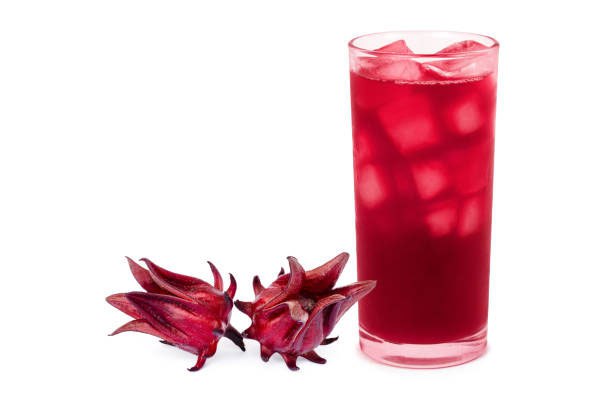
Hibiscus sabdariffa - Flor de Jamaica
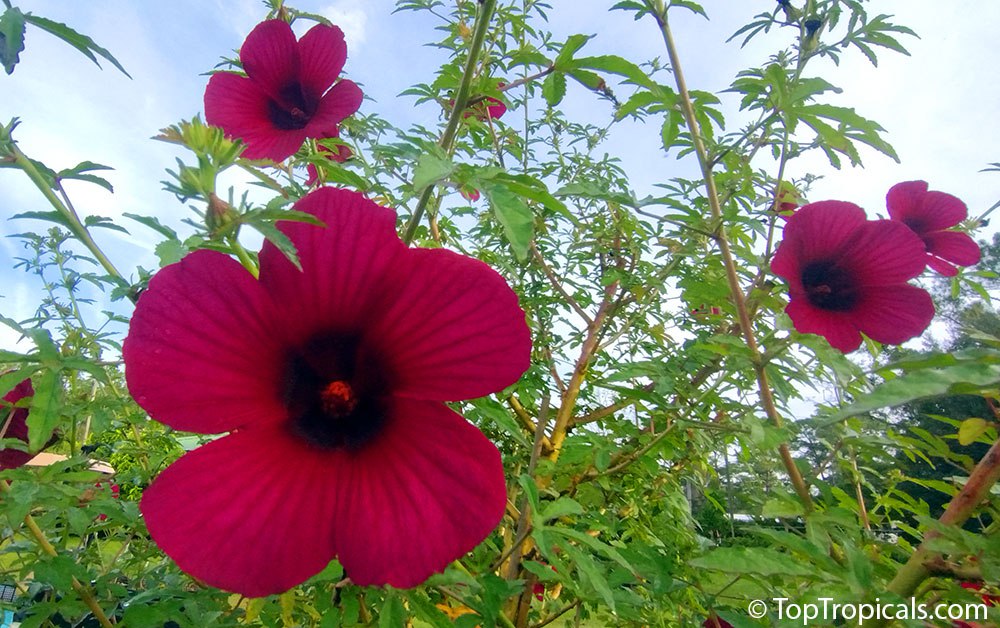
Hibiscus sabdariffa - Flor de Jamaica

Hibiscus sabdariffa - Flor de Jamaica
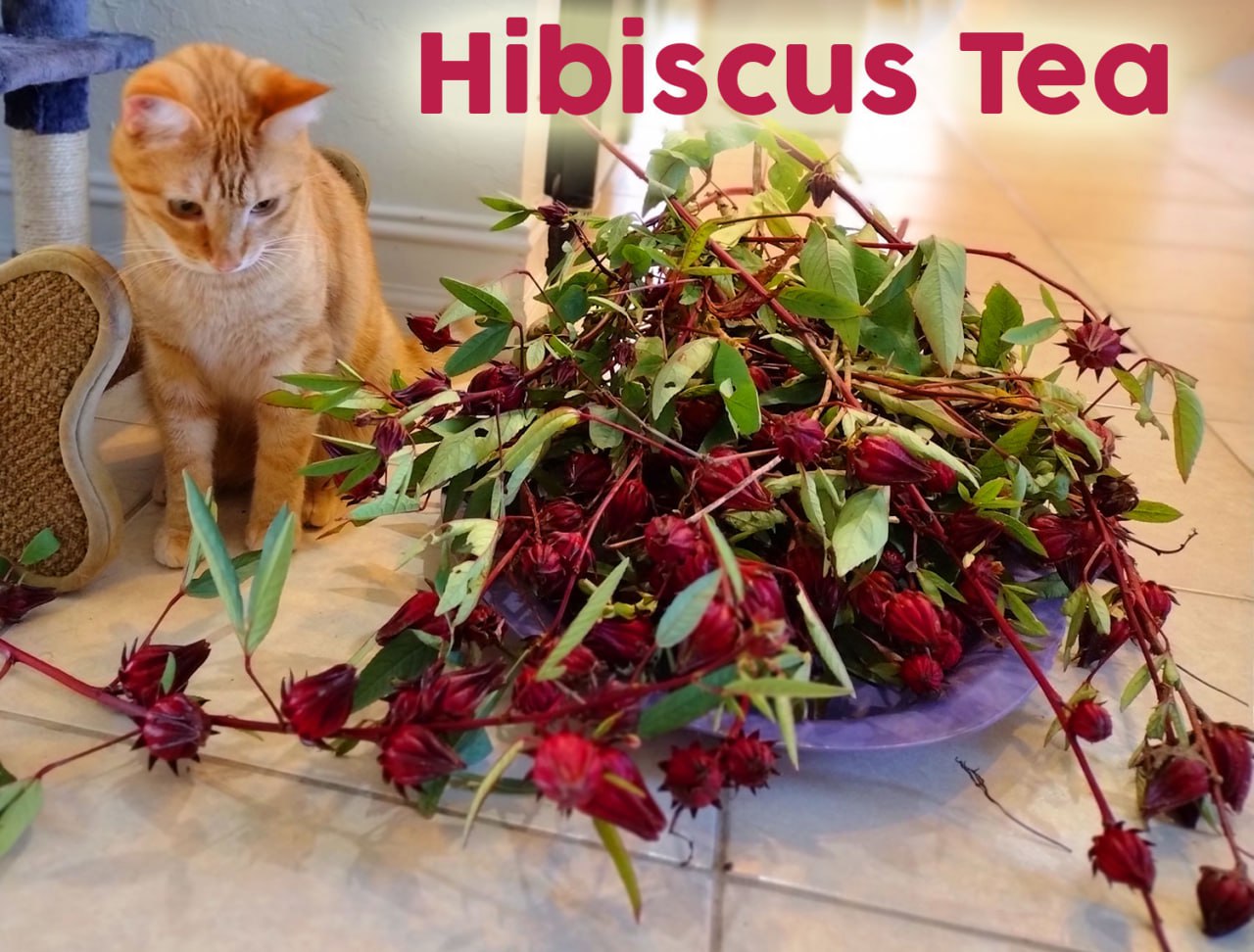
Hibiscus sabdariffa - Flor de Jamaica
Who doesn't adore hibiscus flowers? But guess what? Some hibiscus species are not only gorgeous but also surprisingly practical. They can jazz up your garden and your dinner plate!
Hibiscus cannabinus - Salad Hibiscus - flowers and leaves used in tasty healthy salads and teas.
Hibiscus sabdariffa - Flor de Jamaica, Karkade Sorrel, Roselle - flowers and used for famous beverage "Agua de Flor de Jamaica" and Karkade Tea.
Hibiscus acetosella - Cranberry hibiscus - cranberry-colored flowers and leaves are also tasty and healthy in salads and teas.
Grow your edible flower landscape in no time!
📚 Learn more, with recipes: Most useful Hibiscus plants
🎥 YouTube video:
🛒 Shop Edible Hibiscus
#Food_Forest #Remedies #Recipes
🏵 TopTropicals
What tropical fruit tree is cold hardy and easy to grow? Its Golden Loquat the Symbol of Prosperity, and it tastes like
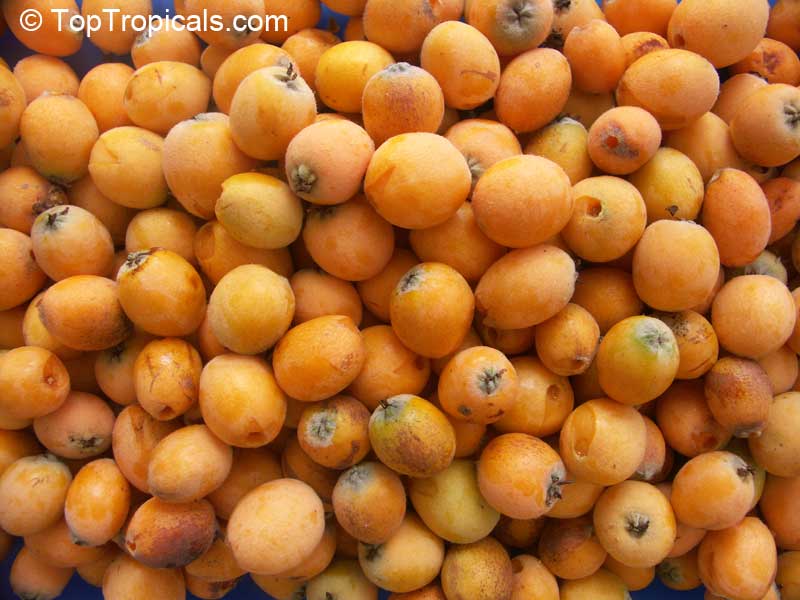
Loquat (Eriobotrya japonica) fruit

Loquat (Eriobotrya japonica) trees in pots
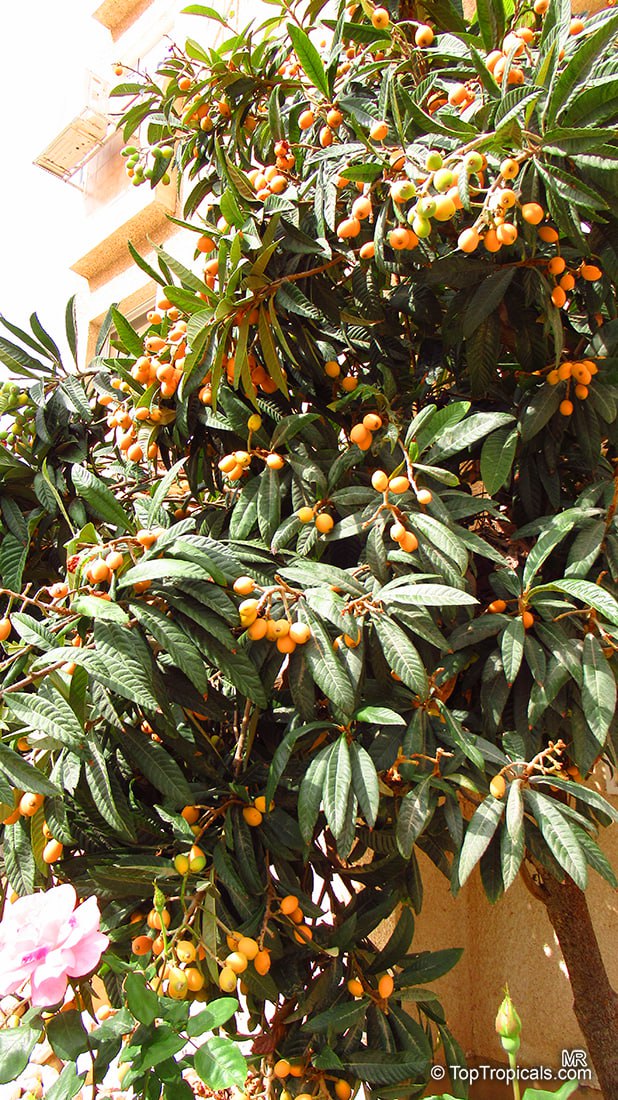
Loquat (Eriobotrya japonica) tree
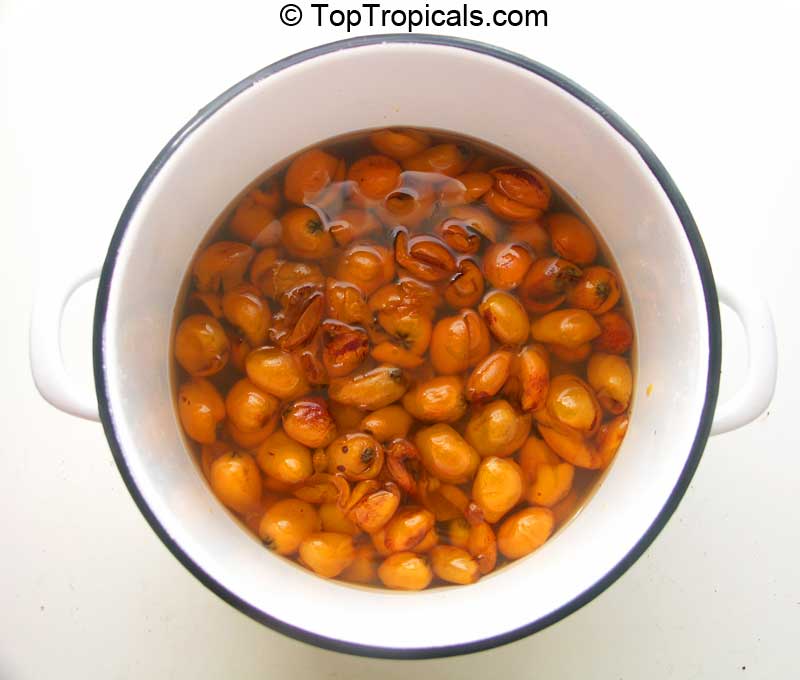
Loquat (Eriobotrya japonica) compot
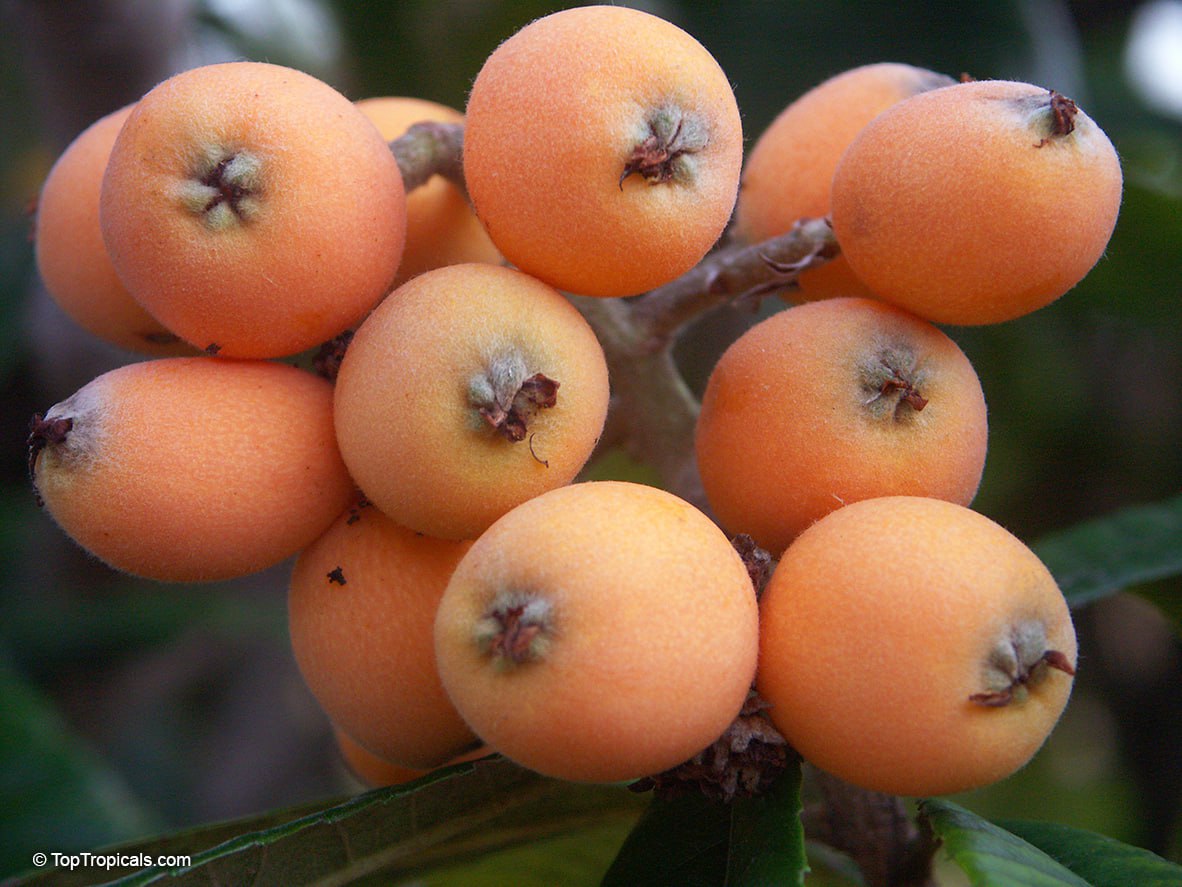
Loquat (Eriobotrya japonica) fruit
- 🍑 Loquat tree (Eriobotrya japonica) is fast-growing, drought-tolerant, cold-tolerant, compact tropical fruit tree.
- 🍑 Heavy producer. Fruits are juicy, aromatic, and resemble apricots. Ripen from early Spring to early Summer.
- 🍑 Ideal for small gardens, beginner fruit tree growers.
- 🍑 High in sugar, acids, vitamins B and C, minerals, and pectin.
- 🍑 Eaten fresh, used in fruit salads, jams, jellies, chutneys, pies, tarts, and wine
- 🍑 Grown in Japan for over 1,000 years. In China, represents gold and wealth, often included in auspicious displays or offerings for prosperity💰
Popular as a natural sweetener and for creating sauces.
📚 Learn more about Loquats
' target="_blank" rel="noopener noreferrer">🎥 YouTube video about Loquat
📁 Overlooked fruit: tasty Loquat recipes (PDF)
🛒Start your fruit garden with Loquats
#Food_Forest #Recipes
🏵 TopTropicals
What does a dragon taste like? Does Dragon Fruit come from a monster cactus? Learn why you need to grow your own
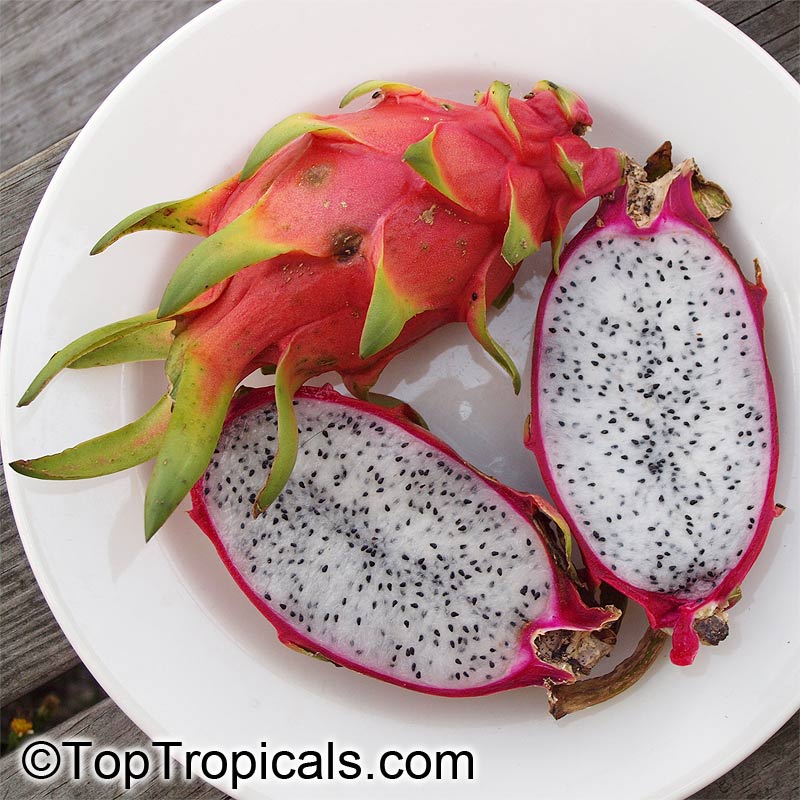
Hylocereus and Selenicereus Dragon Fruit or Pitaya
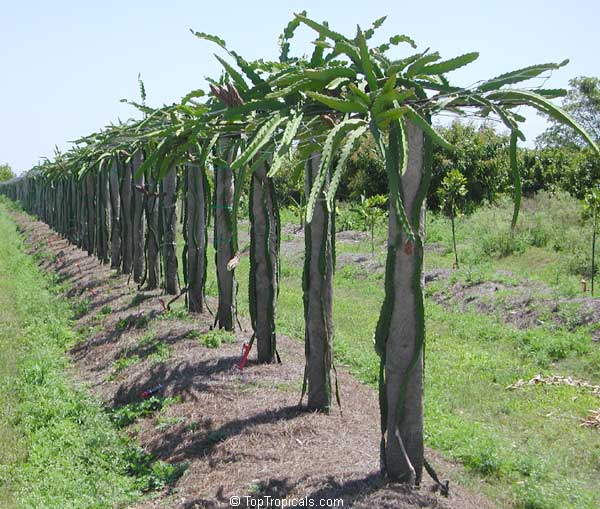
Hylocereus and Selenicereus Dragon Fruit or Pitaya trees on trellis
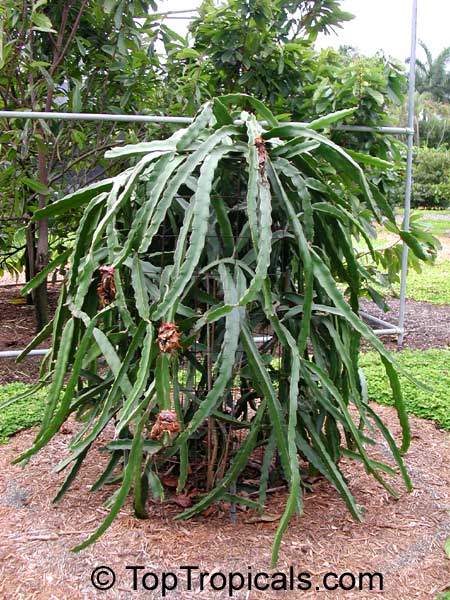
Hylocereus and Selenicereus Dragon Fruit or Pitaya on trellis

Hylocereus and Selenicereus Dragon Fruit or Pitaya red fruit
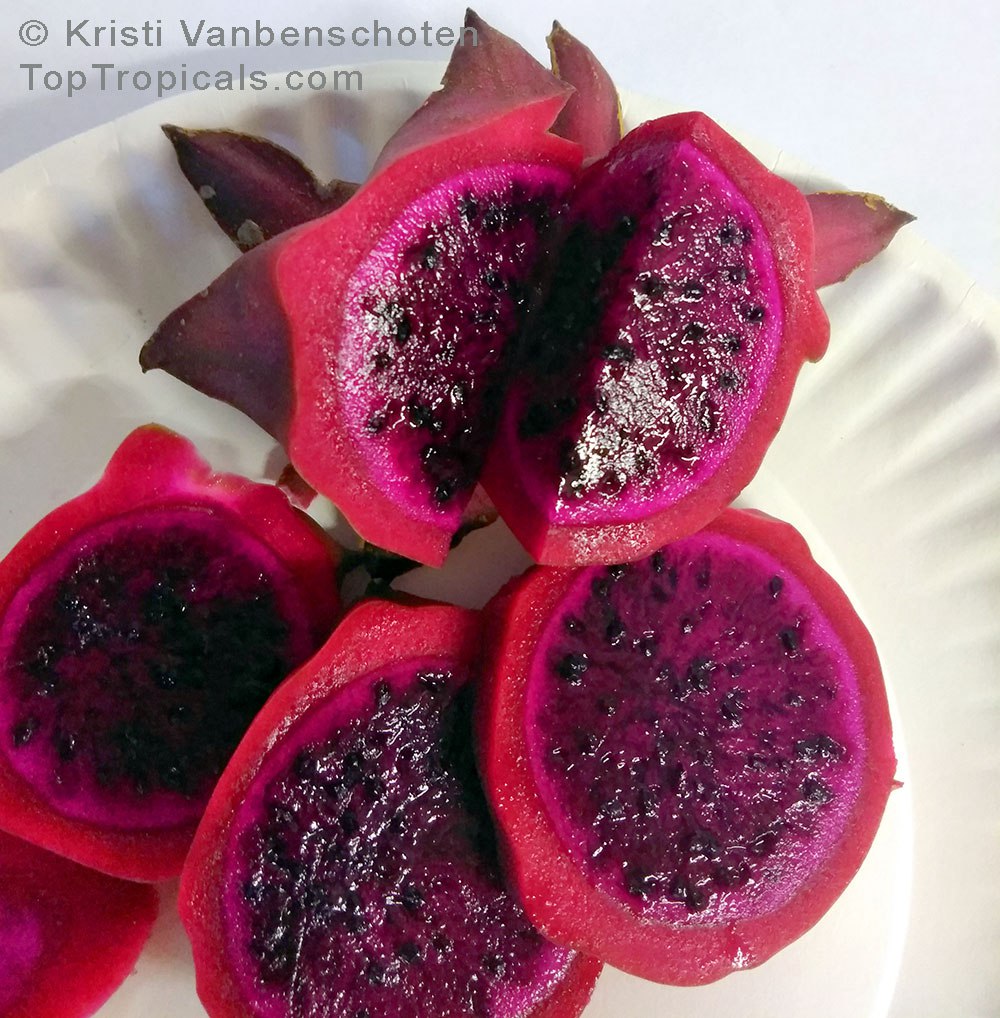
Hylocereus and Selenicereus Dragon Fruit or Pitaya purple fruit
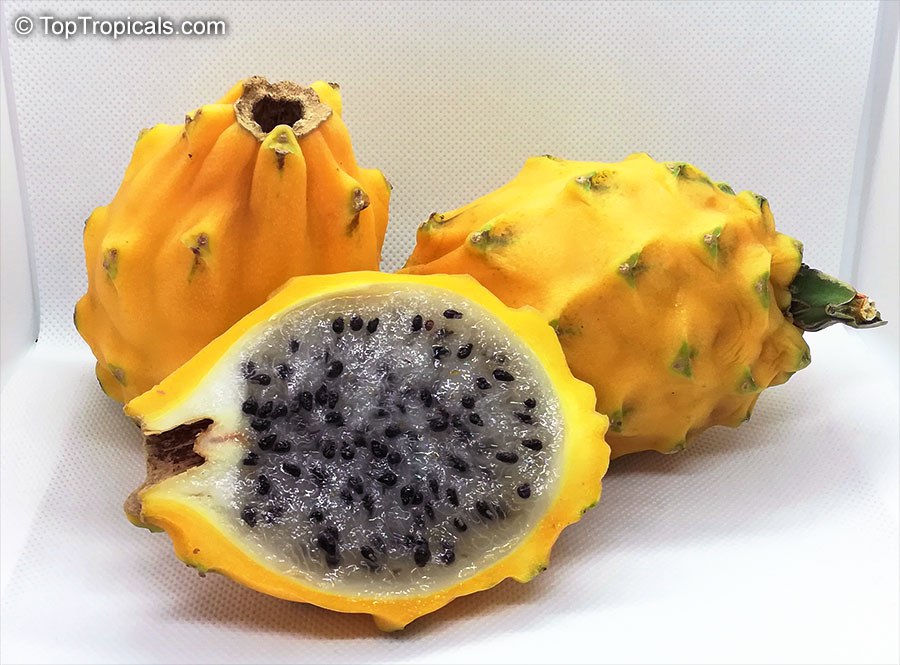
Hylocereus and Selenicereus Dragon Fruit or Pitaya Yellow Parlora
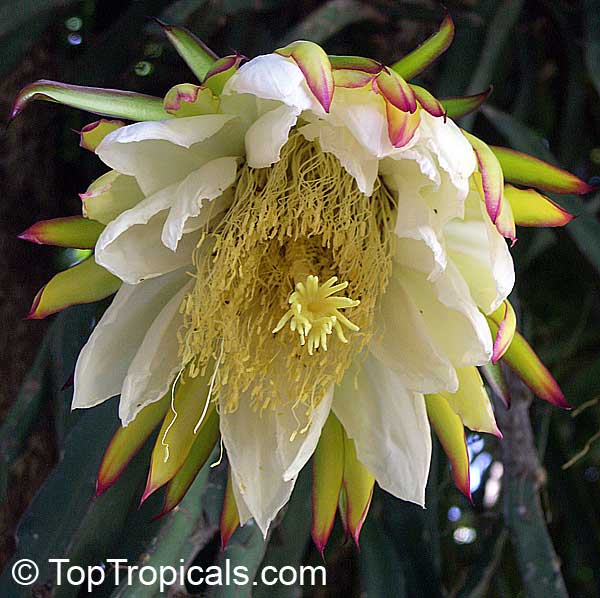
Hylocereus and Selenicereus Dragon Fruit or Pitaya flower
- 🔴 You may have tried a Dragon fruit from the store l, but do you know how it grows? On a cactus tree!
- 🔴 Names: varieties of Hylocereus and Selenicereus - these fruit bearing cactus plants are also called Dragon Fruit or Pitaya.
- 🔴 Commercially grown fruit sold in a grocery store may be tasteless. You need to grow your own good variety to have tasty, sweet, flavorful fruit!
- 🔴 Dragon fruit comes in many varieties. Colors of flesh differ: white, pink, dark red and even purple. The outside of the fruit can be red/pink or yellow.
- 🔴 In commercial groves, Pitayas grow like cactus trees, over a strong support - big "umbrella frames" ☂️
- 🔴 It is an easy plant, with low water needs, takes both sun and semi-shade.
- 🔴 Our favorite variety is Yellow Dragon Fruit Palora, (Selenicereus megalanthus). It is the sweetest and has the most flavor of all. We shared some recipes earlier.
- 🔴 Can be grown in container with a wooden trellis. And the flower is beautiful, too!
📚 Learn more about Dragon Fruit
🍹 Recipe: What to do with a Dragon fruit?
🛒Grow your own Tasty Dragon Fruits
#Food_Forest #Recipes #Nature_Wonders
🏵 TopTropicals
Date:
Kristi's Loquat Tropical BBQ sauce
Loquat trees are famous for their abundant fruit production. Many customers who purchased this tree from us, soon end up with some serious crops and start asking if we have any special recipes for loquat fruit - because you can only eat so much out of hand! Here is our manager Kristi's favorite Loquat recipe - not only delicious and tropically-aromatic, but also good for you. Happy Tropical Meal!
Ingredients
2 lbs loquat fruit
- cup soft brown sugar
- cups malt vinegar
1 onion chopped - cloves garlic
1/2 tsp salt
1/2 tsp black pepper
1/4 tsp cayenne pepper
6 cloves whole or 1/2 tsp ground cloves
Instructions
Wash the fruit, cut them in half and remove stones. The loquats will
lose about a third of their weight once stoned (3 lbs of whole fruit = 2 lbs of fruit, stones removed). Add loquats and all remaining
ingredients to a large saucepan. Bring to a low boil, then simmer for about an hour, stirring occasionally. The liquid will have reduced quite a bit and the fruit
will be collapsed and very soft. Allow to cool slightly, then liquidize the sauce in a blender or a food processor. Be careful, hot sauce really
burns!
This delicious tropical sauce is great for any BBQ - with meats or fish. Enjoy!
Top Tropicals is now in Telegram!
TopTropicals.com - the World's leading authority on tropical plants - is now in Telegram. If you grow a tropical garden or indoor collection of rare plants, this is your channel!
Join to get exclusive updates on tropical gardening:
Fun Facts and Nature Wonders
🌺 How to make your plants flower and stay happy
How to get the biggest fruit crop
🏆 Sweepstakes and Contests
Butterfly and Container Garden
Food Forest
⚜️ Perfume Plants
🍲 Exotic Recipes and Remedies
...and of course, your favorite -
🐾 PeopleCats in the Garden!
JOIN and share with friends! 👇
🏵 TopTropicals
We Grow Happiness
How to always have lots of Guava Juice
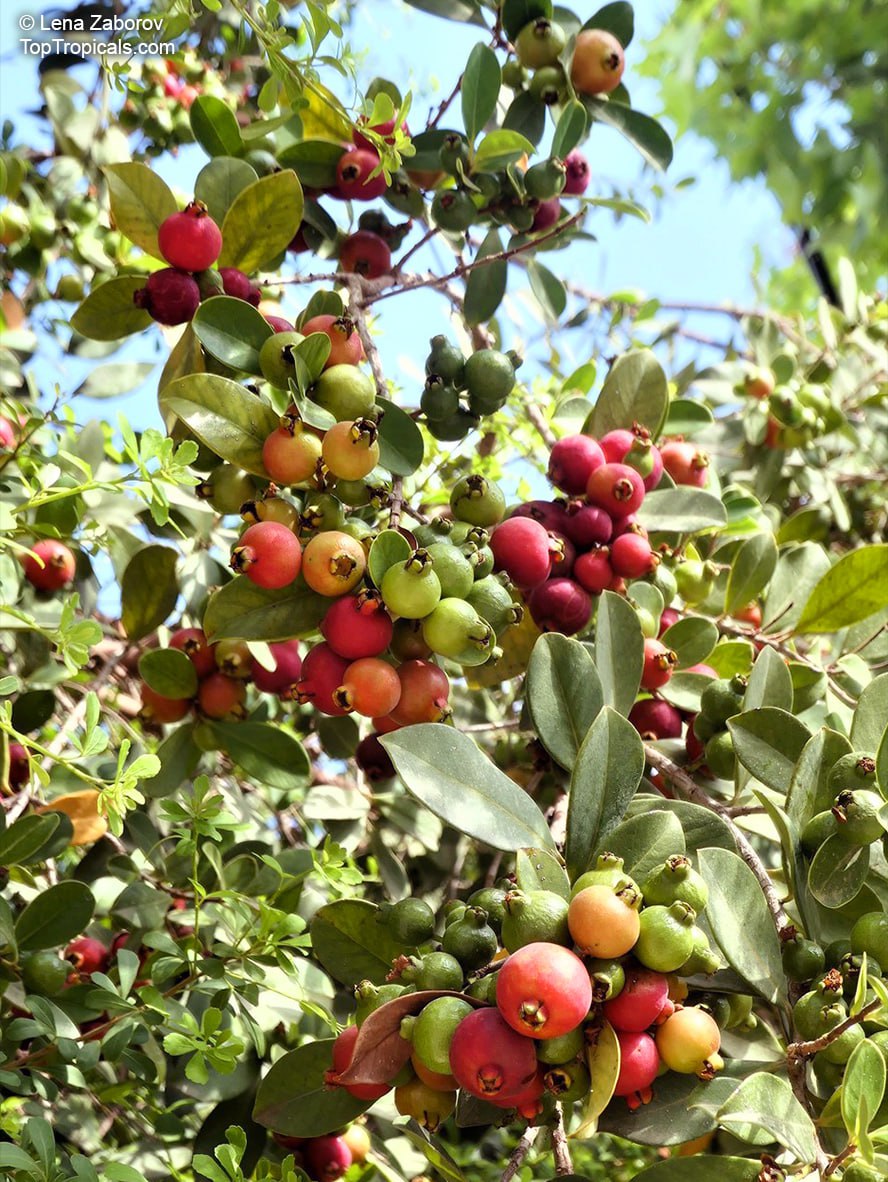
Psidium littorale, Cattley Guava

Psidium littorale, Cattley Guava
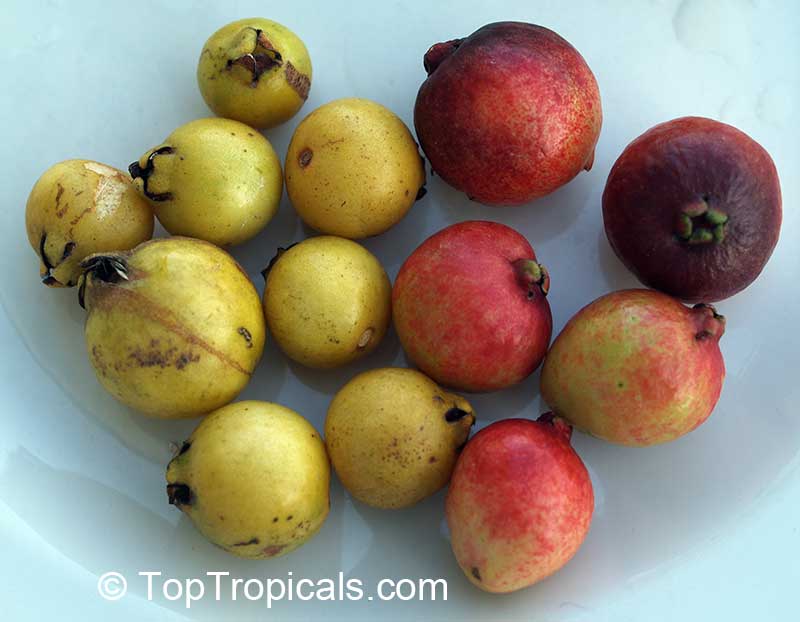
Psidium littorale, Cattley Guava
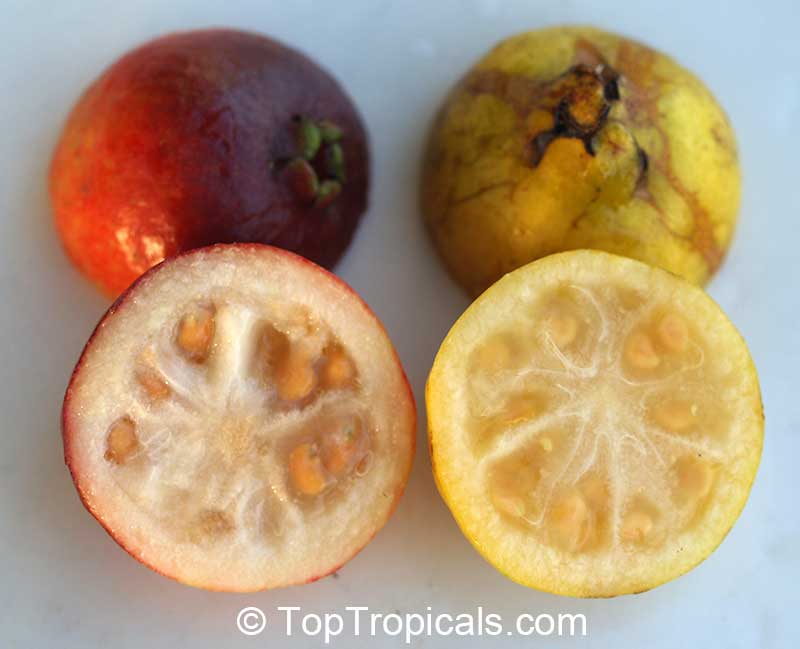
Psidium littorale, Cattley Guava

Psidium littorale, Cattley Guava
- Psidium littorale, also known as Cattley Guava, is a charming small tropical fruit tree.
- Round fruits offer a unique culinary experience with a sweet and tangy flavor, perfect for various dishes and drinks.
- Surprisingly cold-hardy, it adds both beauty and flavor to any landscape.
- Ideal for containers
- A must-have for fruit lovers seeking a tropical treat.
- One tree can bring enough fruit for making a delicious, aromatic, refreshing Guava juice for the whole family during Summer months. Just put the fruit in a blender, add some water, ice and sugar and enjoy!
🛒Order Cattley Guava and never run out of juice
#Food_Forest #Recipes
🏵 TopTropicals
18 most popular herbs: where to use each herb?
- 🌿 Arugula - Green salads, pasta sauce
- 🌿 Balm - Iced drinks, salads, poultry stuffing
- 🌿 Basil - Tomato salad, any past dish? home-made pesto, garnish
- 🌿 Catnip - Sauces and stews, for tea
- 🌿 Chervil - Soups, green salads, as a garnish
- 🌿 Chives - Cream cheese, potato salad, green salads, sauces
- 🌿 Cilantro - Stews, rice, salads, salsa
- 🌿 Dill - Fish dishes, pickles, potato salad
- 🌿 Lemon grass - Oriental stir-fry, for tea
- 🌿 Marjoram - Italian dishes, stews, soups
- 🌿 Mint - Add to potatoes, peas, cucumber, carrots, mint sauce, mint tea
- 🌿 Oregano - Italian and Greek dishes, green salad
- 🌿 Parsley - Butters, pasta dishes, as garnish
- 🌿 Rosemary - BBQ, roast lamb/chicken, fish, fried/baked potatoes
- 🌿 Sage - Stuffing, add to poultry, mix with cream cheese
- 🌿 Sorrel - Soup, serve with fish, pastries
- 🌿 Tarragon - Fish, chicken, sauces
- 🌿 Thyme - Stocks and stews, add to pasta
📸 Basil, Catnip, Rosemary, Oregano, Cilantro, Sage, Terragon, Lemon grass, Mint, Thyme
🛒 Shop tropical herbs and spices
#Food_Forest #Recipes #Remedies
🏵 TopTropicals
Why this Akee taste of deliciousness always follows me?
Akee fruit, Ackee
Can't wait for the next crop this year 😼
📖 Fun Fact: Ackee is the national fruit of Jamaica and is a key ingredient in the traditional Jamaican dish, ackee and saltfish. However, it must be properly ripened and cooked due to its toxic properties when unripe.
‼️ Check out our previous post about Akee.
📚 More about Akee
🎥 YouTube Recipe: How to cook perfect Akee?
🛒 Grow your own Akee tree
#Food_Forest #Nature_Wonders #Recipes #Fun_Facts
🏵 TopTropicals


